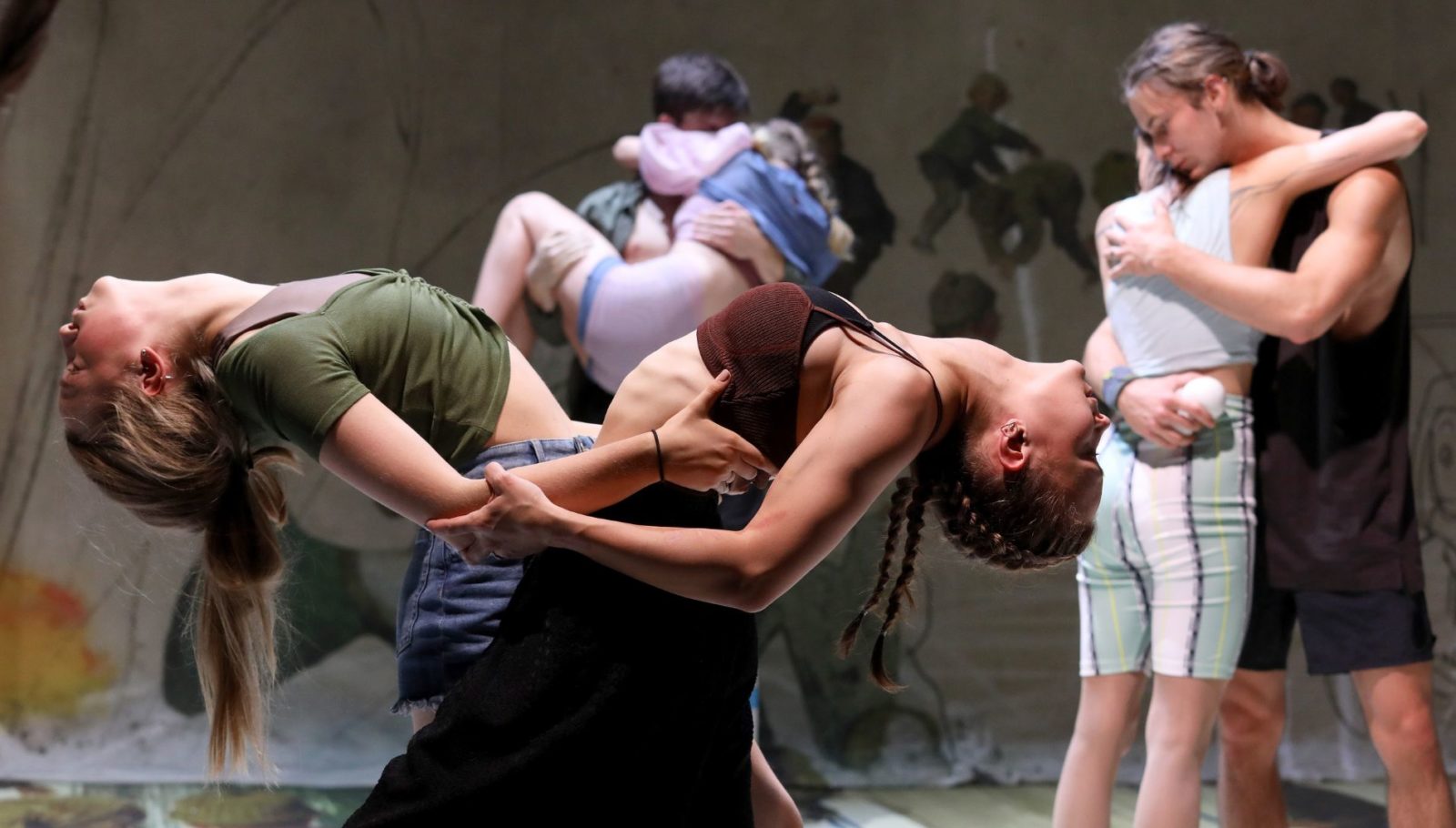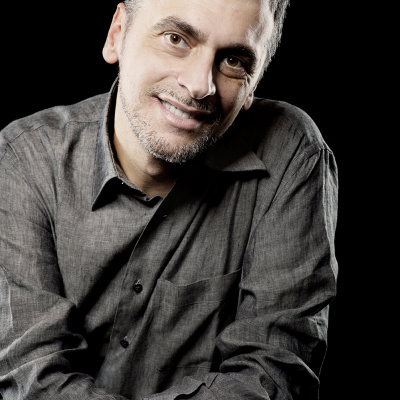Circus and its Allied Arts: the Broad Galaxy of Circus at Edinburgh Fringe
The return of the Edinburgh Fringe Theatre Festival in 2022 marks a continued evolution of how contemporary circus art is made and categorized. Weighing in on the offerings at this year’s Fringe, Raffaele De Ritis examines the many gorgeous forms of modern circus.
Surrounding an immaculate white circus ring in the crowded big top, everyone in the stands moves silently and intimately into tears, reflecting the ten Australian acrobats in thousands of moist eyes. Meanwhile, a few miles away, on the opposite side of the town, six Kenyan acrobats end their show in a sold-out theatre, making the audience rise to their feet and give a cry of joy.
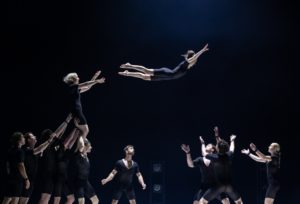
The ten acrobats in the white ring were the ensemble of Circa‘s meditative Humans 2.0, while the show in the theatre was the explosive Black Blues Brothers. Two completely different ways to celebrate life through the wonders of our bodies, in two of the most regularly sold-out shows at the Fringe. In both cases, intimate love stories between human beings. Between those two opposites fall an endless variety of shows and companies. If there are today hundreds of circus festivals on the planet, perhaps only the Fringe can fully express the magnitude and richness of this art form.
After two years, the world’s largest gathering of performing arts is back in full shape, ready to meet our emotions, to mirror our hopes, despairs, dreams and nightmares. And with the diversity of shapes they can assume today, the circus arts seem more and more to be a major element in that.
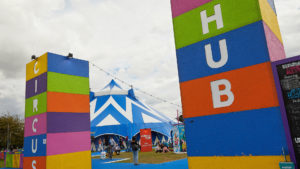
In 2022, the Edinburgh Fringe Festival saw an “estimated 2,201,175 tickets issued across 3,334 shows which were performed by artists from 63 countries,” per Fringe Society official data. Of those shows, a good half were in the realm of stand-up comedy, with the remainder being every conceivable declination of music, drama, cabaret, dance, puppetry, improvisation, parody, and performance art. At least 300 of these shows were definable as pure circus. An odd exercise indeed, with the official festival classification being “dance, circus, and physical theatre.” But how transverse has circus always been to any other categories? How much circus is also hidden in the velvet folds of “cabaret,” or the colorful inventions of “children’s theatre”?

An experience so broad as the Fringe always keeps us daydreaming about how elusively circus resists the infinite galaxy that legendary British circus bibliographer Raymond Toole-Stott (1910-1982) named “Circus and Allied Arts” (as by the title of his lifelong five-volume opus). This August in Edinburgh, the experiences of “contemporary” and “traditional” circus (oh, thank God, at least nobody ever uses those two terms here) disintegrated into cabaret, burlesque (which becomes more and more about acrobatics than dancing), clowning, physical comedy, stage magic, close-up magic, mentalism, comedy mentalism (yes, this exists, and brilliantly), adults-only magic (yes, this too, and not so impressively), acrobatic hip-hop, aerial dance, a playing-card ninja, the tale of a tiger lady, extreme performances, circus-themed drama or comedy…
Moreover, how do you classify the deliciously intimate one-man show of Mat Ricardo – the extraordinary gentleman, whose anthology of unique and obscure balancing and juggling skills fully deserves him the billing quote of “the most talented man on the Fringe”? And what about the popular large-sized 360 ALLSTARS, an hour of beatboxing, drumming, BMX, basketball, and Cyr wheel? Let’s not forget another of those fascinating artistic crossovers, the profound Collision from Casus Circus company, where six young performers attempt a common language between pure circus, urban dance and music, and martial arts.

A sure guarantee of the circuses landing at the Fringe is the quality of pure spectacle. Recently, and especially in Europe, circus tends toward the opposite: by taking itself seriously, perhaps in a kind of anxiety of its recognition as “art,” it loses in visual seduction and fantasy. This is not a weakness of Quebecoise circus, a territory in-between the intellectual flair of France and the showbiz tracts of America. So, when a company such as Flip FabriQue launches into the ambitious theme of the feminine condition in modern society in their show Muse, it turns into a richness of visual imagery, polished choreography, excellent circus technique, and a brilliant soundtrack. The same goes for the surreal world of Cirque Alfonse, whose Animal—a bizarre and humorous exploration of Canadian farm life— connects us with the similarly ancestral nature of the circus.
Societal and gender themes are deeply pushed toward spectacle with the rise of the “circus/cabaret” subgenre, vastly represented at this year’s festival. If a large part of the stand-up, music, and comedy sections of the Fringe are populated by queer and drag shows, most of them seem to benefit from the inclusion of circus acts. What better way to express freedom, independence, individuality? This is a genre hugely popular in the Australian industry, and many of them reached the Fringe.
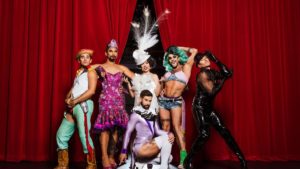
The queer superstar Reuben Kaye hosted this year a brilliant circus-variety, The Kaye Hole; another show, Rouge, bills itself as “circus for grown-ups” (and is accordingly brilliant in acrobatics and style). Wanderlust is a riotous treat in the same direction. The drag circus company Briefs Factory presented two different shows, Briefs Bite Club and Briefs Sweatshop, celebrations of diversity where feathers and glitter, aerialists and acrobats, joyfully demolish the prejudices and boundaries between sexes.
If in some of those shows, full nudity and straight jokes are not always functional in terms of style, it is in Blunderland that the blending of circus, music, and naughtiness magically assumes the intense and coherent shape of a real hallucinogenic trip. Rather, this show appears as something even weirder: it becomes a deliciously perverted variation of a classic, as it has been staged at the Fringe upon the same spiegeltent catwalk-stage as La Clique.
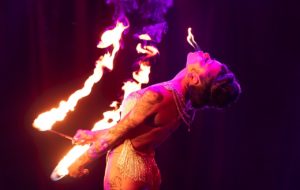
Ah, La Clique. While we mourn Jean-Luc Godard as a milestone of movie language, we applaud the recurrent resurrections of La Clique for their similar virtues. Just breathless. Upon its birth in 2004, the show blew up the concept of circus itself, pushing it to the extremes of its “allied arts”—even in this new, brilliant edition: not one act is crafted without that balance between elegance, anarchy, and openness to every art form. If ever, at the turn of the last century, the circus language generated the rare post-Soleil milestones, for sure La Clique is one of them, and stands as a major symbol of what remains essential in the eternal and mysterious DNA of circus.
The key to La Clique is class, as well as it is key to another great show that seems its opposite: the aforementioned Circa‘s Humans 2.0. Whereas La Clique shines in the crafted elegance of its excess, Humans 2.0 impresses with the polished minimalistic delicacy of its form. Rarely does a circus show achieve the awe-inspiring effect of great painting or sculpture. And even more scarcely does it speak so deeply to our inner self, facing the emptiness of our fears and the richness of our hopes; while at the same time purely entertaining, as in all great art. Circa’s director Yaron Lifsichitz is the Caravaggio of today’s circus landscape.
Such polished shows are as fascinating as are their opposites: the dramaturgy of anarchy. This is perhaps a characteristic of La Putika, the brilliant company from Prague, whose recent rise within circus seems to indicate a new approach to circus language. They presented two excellent shows at the Fringe.
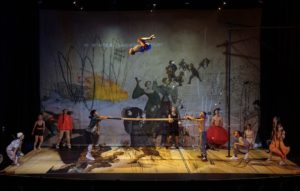
Runner uses a giant treadmill as its stage to explore the souls of its four performers—and of ourselves, poetically exploring the relationships of time and speed in our lives. Boom! is their new special project with the charm of an almost-unfinished work. It is the meeting between the Praguese performers and a group of very young refugees from the circus school of Kiev. It is a moving, brave, exhilarating, and sincere piece of beautiful circus, enhanced by the unusual simultaneity of its acts and performances.
If most of those shows turn out to be selective in their artistic approach, age limits, or content, the Fringe also largely allows for the expression of popular family circus. This can be seen in everything from the extensive format of Cirque Berserk’s huge ensemble to the talented one-man circus of mime-clown Marc Gassot in Lion, produced by Finnish company Circo Aereo. Or from the UK’s Lost in Translation Circus, which achieves the lovely result of naturalistic narrative circus in Hotel Paradiso, blending the tradition of pantomime with the sincere acrobatic technique of a real troupe. A thin storyline also gently drives the action of Tulu by Circus Abissinia in a metaphor of achievement and emancipation inspired by Derartu Tulu, the first African woman to win the gold at the Olympics.

On the other side, instead of a theme, only an evocation is needed to the Black Blues Brothers show, crafted in Italy with Kenyan acrobats on an American theme—its ingredients, a familiar soundtrack and imagery, and a remarkably talented ensemble. The show is billed as “an acrobatic musical comedy tribute”: no mention of circus. But surely it is a perfect crossover of its allied arts and, even if not on a ring but on a stage, bears, at its best, the secret gift of circus itself: breaking the fourth wall in a seamless exchange of joy.
The circus artist mirrors themselves in our inner selves. They offer us the much-needed, long-awaited communion that is finally back.
Main image: La Putika's Boom! All images credited to each of the shows' respective press teams...
Do you have a story to share? Submit your news story, article or press release.

